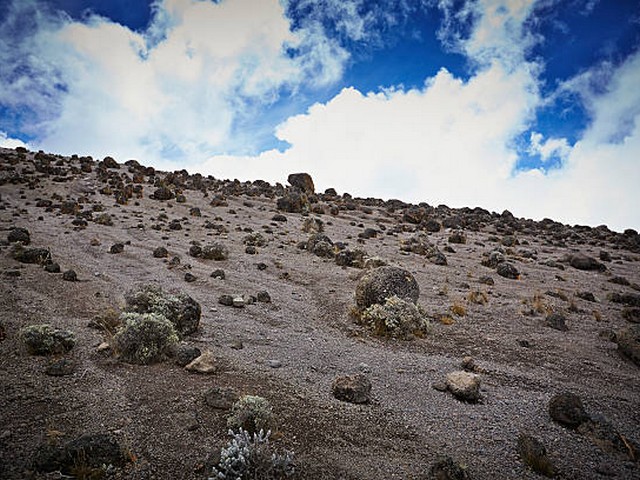Capturing the Majestic: Best Places To Take Photos On Kilimanjaro
Welcome to the Roof of Africa!
There’s something inherently magical about Mount Kilimanjaro. Rising majestically above the African plains, it’s not just a mountain; it’s a mosaic of ecosystems, a beacon for adventurers, and a paradise for photographers. Whether you’re a professional photographer or an enthusiastic amateur, Kilimanjaro offers a breathtaking canvas. At Kilimanjaro Centre for Trekking and Ecotourism (KCTE), we understand the allure of capturing this iconic peak through your lens. That’s why we’ve curated the ultimate guide to the best photo spots on Kilimanjaro, ensuring you return with not just memories but stunning photographs that tell tales of your adventure.
The Photographic Journey Begins
Embarking on a trek up Kilimanjaro is akin to traversing the world’s climates from the equator to the poles in just a few days. Each zone offers unique landscapes, wildlife, and skies – countless opportunities to capture the diverse beauty of Kilimanjaro. Here are the top places to take your camera out and start shooting:
1. The Rainforests of the Lower Slopes
Capture the Essence: As you begin your ascent, the lush, humid rainforests that cloak the lower slopes of Kilimanjaro create a mystical ambiance. The play of light through the dense foliage, the morning mists swirling around ancient trees, and the occasional glimpse of wildlife such as colobus monkeys or vibrant birdlife provide ample opportunities for captivating photographs.
2. Moorland and Heath Zone: A Photographer’s Dream
Dramatic Vistas: Ascending further, the landscape transforms dramatically into alpine moorland, marked by giant heathers and lobelias. This zone offers panoramic views and the chance to capture the stark contrast between the rugged terrain and delicate floral. The rolling clouds and sharper light at this altitude can add a dramatic flair to your photographs.
3. The Alpine Desert’s Lunar Landscape
Surreal Beauty: As you approach the middle elevations, the environment shifts again to what resembles a lunar landscape. The Alpine Desert zone provides a surreal backdrop with its sparse vegetation and wide expanses of sand and rock. Photographing this area during the golden hours can result in images that are both stark and stunning, with long shadows and a golden glow that complements the monochrome landscape.
4. Kibo’s Glacial Valleys and Peaks
Iconic Snowcaps: The approach to Kibo, the highest of Kilimanjaro’s volcanic cones, is where the trek becomes truly awe-inspiring. The sight of glaciers, like the famous Rebmann Glacier, against the backdrop of the African sky is not to be missed. Capture the first light of dawn as it illuminates the summit, creating a contrast between the dark volcanic rock and the brilliant ice.
5. Uhuru Peak: The Summit
Triumph at the Top: Reaching the summit of Kilimanjaro, Uhuru Peak, is an emotional moment for many. It’s also where you can capture the ultimate sunrise, overlooking a sea of clouds and the vast African landscape stretching below. The Roof of Africa offers a 360-degree panorama that is perfect for wide shots and breathtaking vistas that encapsulate the triumph of your climb.
Preparing for Your Photographic Expedition
Gear and Tips: When packing for Kilimanjaro, remember that the mountain’s varied environments call for versatile equipment. A good range lens, protective gear for your camera, and extra batteries are essential due to the cold temperatures at higher altitudes which can drain battery life quickly. Also, bringing a lightweight tripod can help in capturing clear shots in low light conditions during sunrise or sunset.
Capturing More Than Just Photos
At KCTE, we believe that photography on Kilimanjaro is more than just taking pictures; it’s about capturing moments that reflect your personal journey and the spirit of this majestic mountain. Our guided treks not only promise prime photographic opportunities but also ensure you experience the rich culture, flora, and fauna that Kilimanjaro has to offer.
Why Choose KCTE?
With Kilimanjaro Centre for Trekking and Ecotourism, you’re choosing more than a trekking service. You’re opting for an experienced guide in both adventure and photo opportunities on Kilimanjaro. Our tailored itineraries are crafted to offer the best times and spots for photography, guided by professionals who know the mountain intimately.
Conclusion: Your Next Step to an Unforgettable Photo Journey
From the rainforest cloaked base to the icy summit, Kilimanjaro is a photographer’s paradise. Each zone offers unique landscapes filled with awe-inspiring photo opportunities. At KCTE, we’re committed to making your photographic journey as epic and memorable as the mountain itself. Are you ready to capture the beauty of Kilimanjaro through your lens? Contact us today to book your climb and start planning the adventure of a lifetime.
FAQ
Q: What is the best time of year to photograph Kilimanjaro?
A: The best times are during the dry seasons, from late June to October and from late December to early March. These periods provide clearer skies and more predictable weather.
Q: Are there any photography restrictions on Kilimanjaro?
A: No, but it’s important to respect the natural environment and the privacy of other climbers. Always ask for permission before photographing local people or cultural sites.
Q: Can beginners in photography join your tours?
A: Absolutely! Our tours cater to photographers of all skill levels and provide advice and help as needed.
Capture the towering essence of Kilimanjaro and bring home not just photos, but stories. Join us at Kilimanjaro Centre for Trekking and Ecotourism, where your adventure and photographic dreams reach new heights!




